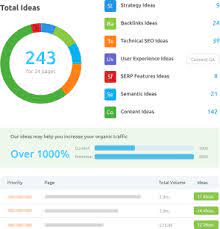The Power of Big Data and Predictive Analytics
In today’s digital age, the amount of data generated is staggering. This vast volume of data, known as big data, holds immense potential for businesses to gain valuable insights and make informed decisions. However, the real magic happens when big data is combined with predictive analytics.
Understanding Big Data
Big data refers to large and complex datasets that traditional data processing applications are unable to handle efficiently. This data comes from various sources such as social media, sensors, transactions, and more. By analysing big data, businesses can uncover patterns, trends, and correlations that were previously hidden.
The Role of Predictive Analytics
Predictive analytics is the practice of extracting information from existing data sets to determine patterns and predict future outcomes and trends. By using statistical algorithms and machine learning techniques, businesses can forecast future events with a high degree of accuracy.
The Synergy Between Big Data and Predictive Analytics
When big data is combined with predictive analytics, businesses can unlock powerful capabilities. By analysing large datasets in real-time and applying predictive models, organisations can anticipate customer behaviour, identify potential risks, optimise operations, and make proactive decisions.
Benefits for Businesses
The integration of big data and predictive analytics offers numerous benefits for businesses:
- Improved Decision-Making: By leveraging predictive insights from big data analysis, businesses can make informed decisions quickly.
- Enhanced Customer Experience: Predictive analytics enables personalised recommendations and tailored services based on customer preferences.
- Risk Mitigation: Businesses can identify potential risks early on and take proactive measures to mitigate them before they escalate.
- Operational Efficiency: Optimising processes based on predictive analytics results in increased efficiency and cost savings.
In Conclusion
The combination of big data and predictive analytics empowers businesses to stay ahead in a competitive market landscape. By harnessing the power of these technologies, organisations can drive innovation, enhance decision-making processes, improve customer satisfaction, and ultimately achieve sustainable growth.
8 Essential Tips for Harnessing Big Data and Predictive Analytics Effectively
- Ensure data quality by cleaning and preprocessing datasets before analysis.
- Use appropriate tools and technologies for storing and processing big data efficiently.
- Implement advanced algorithms for predictive analytics to uncover valuable insights.
- Regularly update models with new data to improve accuracy and relevancy of predictions.
- Consider scalability when designing big data solutions to handle increasing volumes of data.
- Invest in training and upskilling employees on big data analytics techniques and tools.
- Maintain compliance with data protection regulations when handling sensitive information.
- Collaborate across teams to leverage diverse expertise in interpreting results and making informed decisions.
Ensure data quality by cleaning and preprocessing datasets before analysis.
To harness the full potential of big data and predictive analytics, it is crucial to ensure data quality by thoroughly cleaning and preprocessing datasets before conducting analysis. By removing inconsistencies, errors, and irrelevant information from the data, businesses can enhance the accuracy and reliability of their predictive models. Data cleaning and preprocessing help in eliminating noise and improving the overall quality of insights derived from big data analysis, enabling organisations to make more informed decisions and drive strategic initiatives with confidence.
Use appropriate tools and technologies for storing and processing big data efficiently.
To maximise the benefits of big data and predictive analytics, it is crucial to utilise suitable tools and technologies for storing and processing data efficiently. Implementing robust storage solutions and advanced processing technologies enables businesses to handle large datasets effectively, extract valuable insights in a timely manner, and build accurate predictive models. By investing in the right tools tailored to their specific needs, organisations can streamline data management processes, improve performance, and ultimately enhance decision-making capabilities based on actionable analytics.
Implement advanced algorithms for predictive analytics to uncover valuable insights.
Implementing advanced algorithms for predictive analytics is crucial in unlocking valuable insights hidden within big data. These sophisticated algorithms enable businesses to delve deeper into their datasets, identify complex patterns, and forecast future trends with precision. By harnessing the power of advanced algorithms, organisations can make informed decisions, anticipate market changes, and gain a competitive edge in today’s data-driven world.
Regularly update models with new data to improve accuracy and relevancy of predictions.
To enhance the accuracy and relevance of predictions in big data and predictive analytics, it is crucial to regularly update models with new data. By incorporating fresh data into the analysis, businesses can ensure that their predictive models remain current and reflective of evolving trends and patterns. This proactive approach not only improves the reliability of predictions but also enables organisations to make informed decisions based on up-to-date information, ultimately driving better outcomes and staying ahead in a dynamic business environment.
Consider scalability when designing big data solutions to handle increasing volumes of data.
When designing big data solutions to manage expanding volumes of data, it is crucial to consider scalability. Scalability ensures that the system can accommodate growing data loads without compromising performance or efficiency. By designing scalable solutions, businesses can future-proof their infrastructure and effectively handle the ever-increasing amounts of data generated, allowing for seamless integration of predictive analytics to derive valuable insights and drive informed decision-making processes.
Invest in training and upskilling employees on big data analytics techniques and tools.
Investing in training and upskilling employees on big data analytics techniques and tools is crucial for maximising the potential of big data and predictive analytics within an organisation. By providing employees with the necessary knowledge and skills, businesses can ensure that their workforce is equipped to effectively analyse large datasets, extract valuable insights, and leverage predictive models to make informed decisions. This proactive approach not only enhances employee capabilities but also strengthens the overall data-driven culture of the company, leading to improved operational efficiency and competitive advantage in today’s data-driven business landscape.
Maintain compliance with data protection regulations when handling sensitive information.
It is crucial to maintain compliance with data protection regulations when handling sensitive information in the realm of big data and predictive analytics. Ensuring that data is handled securely and in accordance with relevant laws and regulations not only protects individuals’ privacy but also safeguards the reputation and integrity of businesses. By prioritising compliance, organisations can build trust with customers and stakeholders while minimising the risk of data breaches or legal repercussions.
Collaborate across teams to leverage diverse expertise in interpreting results and making informed decisions.
Collaborating across teams is a crucial tip when it comes to harnessing the full potential of big data and predictive analytics. By bringing together individuals with diverse expertise and perspectives, businesses can benefit from a multifaceted approach to interpreting data results and making informed decisions. This collaborative effort not only enhances the accuracy and depth of analysis but also ensures that insights are viewed from various angles, leading to more comprehensive and strategic decision-making processes.






